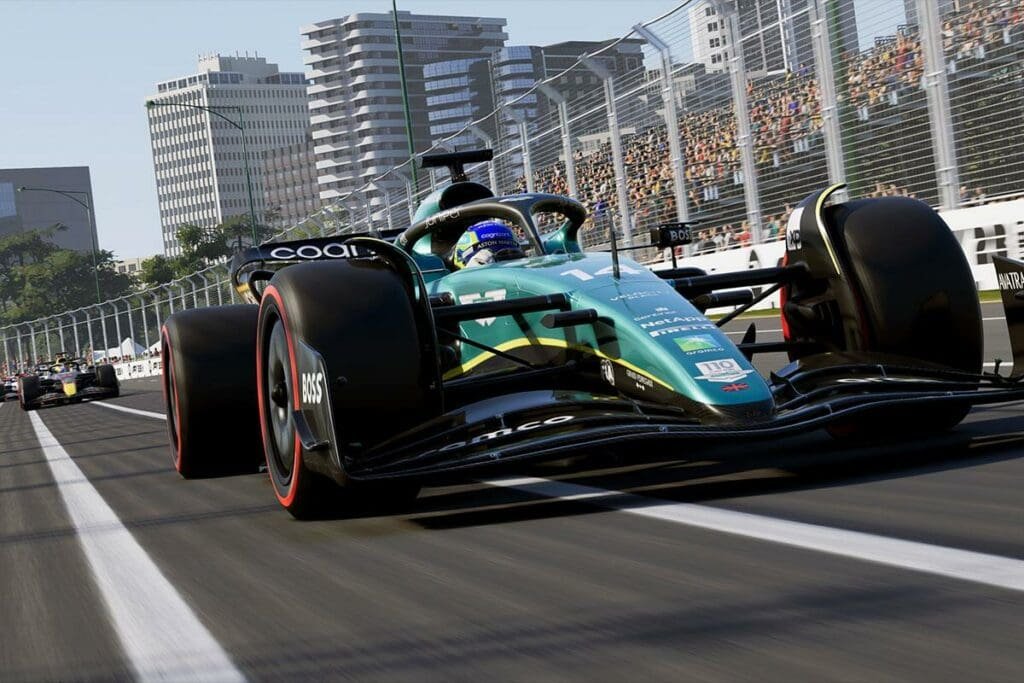The Monaco Grand Prix is the most historical and well-known race in F1. Not only that but it is also arguably the most difficult track to race. This is why you need the best F1 23 Monaco setup for both dry and wet conditions on this tough street track. If you thought driving in dry weather was tough on this track, wet weather racing is a whole different ball game.
Monaco requires intricate and precise turns rather than speed. Going even slightly faster than you should will result in you crashing into a wall in most of the turns. So, in this guide, we will show you need to do to get the best out of your setup for this track.
Best F1 23 Monaco setup for all weather conditions
Monaco is as ‘street’ as a track can get. Racing on the roads of Monaco demands high levels of control over your F1 23 Monaco build. This setup focuses on exactly this, giving you a good grip and letting you be as accurate with the turns as possible.
Since Monaco requires precise movements, make sure you don’t alter these settings too much as these have been proven to give super-fast lap times. Make sure you only change settings where it’s required, or the car might end up being unstable.
Note: Since the wet setup requires changes only in suspension and a few other settings, the adjustments for it will be included along with the dry setup settings wherever needed.
Aerodynamics
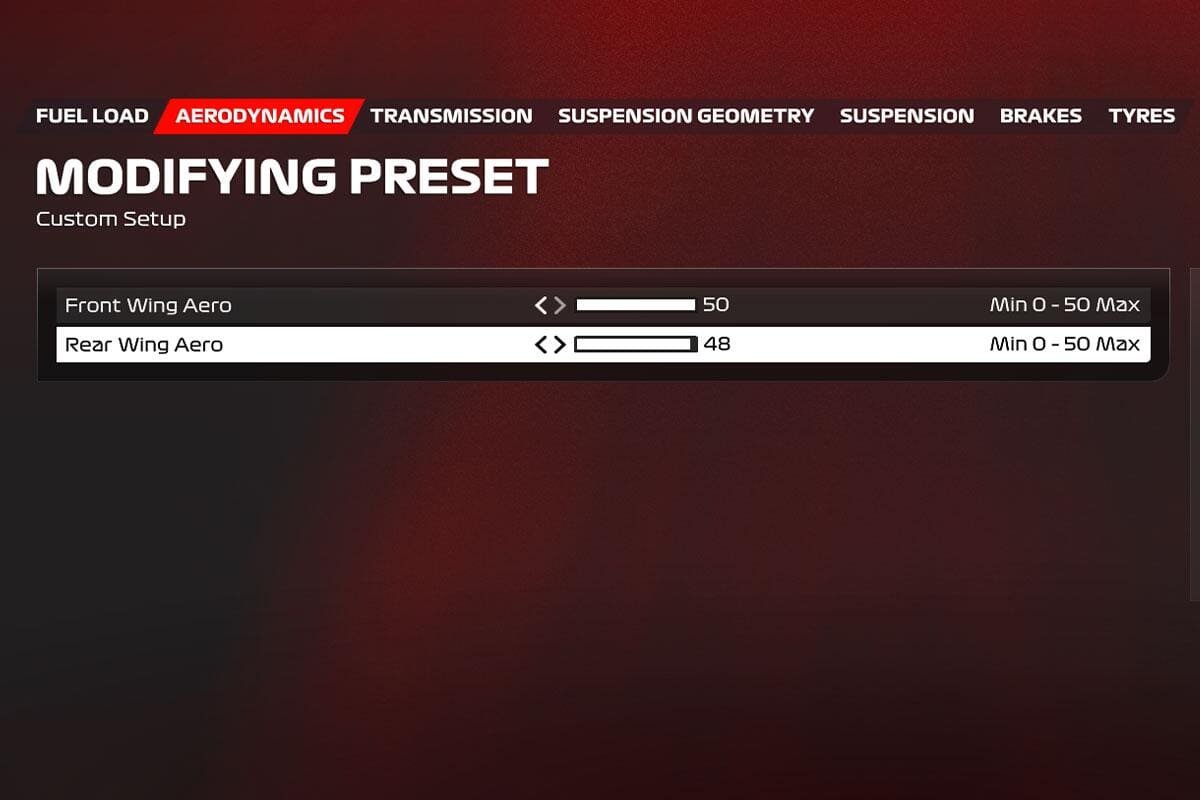
- Front Wing Aero: 50
- Rear Wing Aero: 48
It is crucial to have high aero for Monaco, as your F1 car needs to be able to take turns for the most part of the track. This comes at the cost of a lower straight-line speed, which can be given up for this track.
Transmission
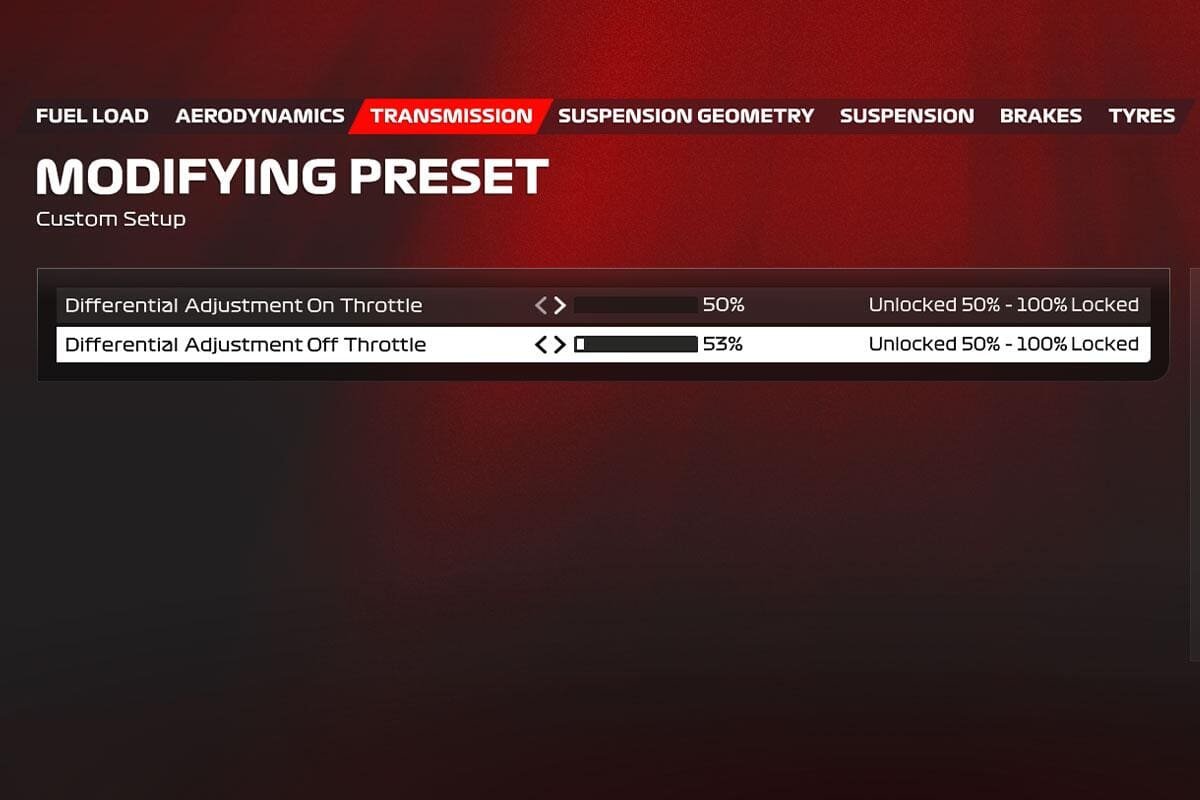
- Differential Adjustment on-throttle: 50
- Differential Adjustment off-throttle: 53
A higher differential than these values will give you a more stable rotation and acceleration, but you will lose speed. This part of the F1 23 Monaco setup is where we recommend leaning towards speed, making sure you are not too slow. You can choose to increase this for wet conditions only if you feel like the car is too unstable for you.
Related: F1 23 camera settings for maximum competitive advantage
Suspension Geometry
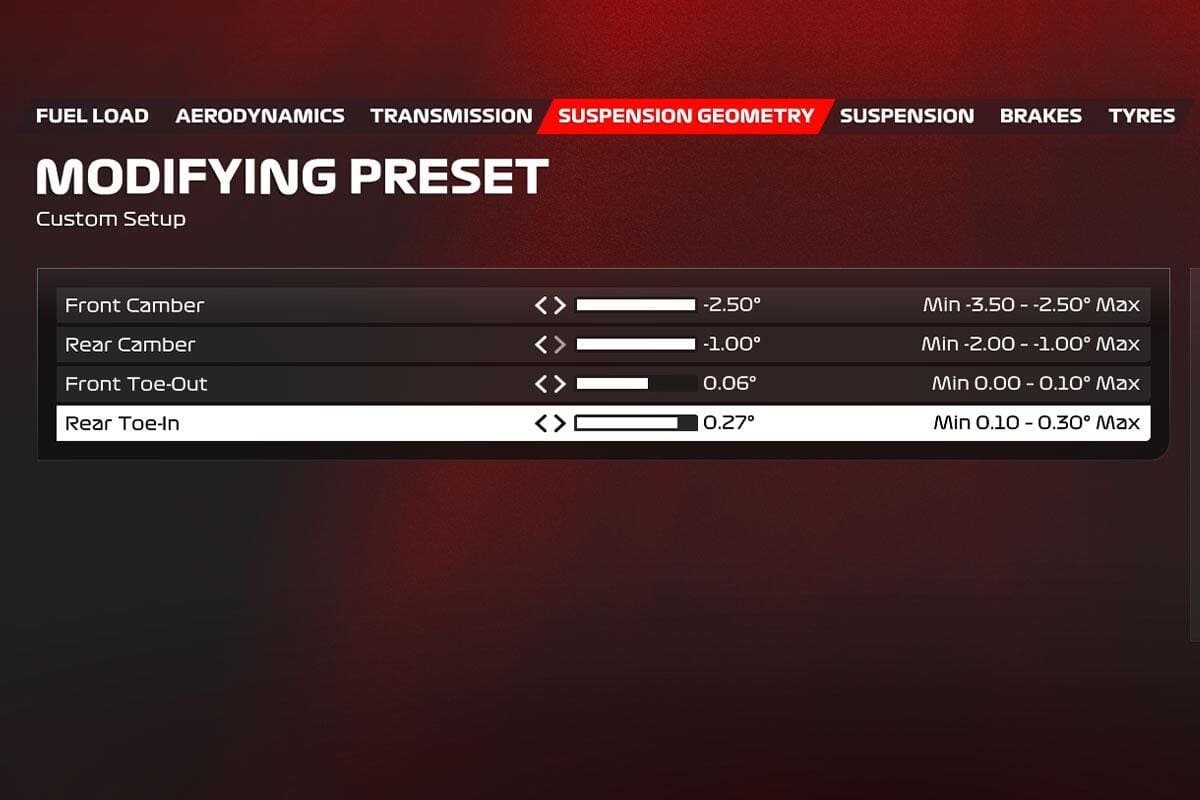
- Front camber: -2.50˚
- Rear Camber: -1.00˚
- Front Toe: 0.06˚
- Rear Toe: 0.27˚
Using these values will ensure your car stays consistent in its handling along the tight and twisty turns of Monaco. Changing these values can make a significant difference in your lap times, so experiment with this at your own risk. These settings will make your tyre wear optimal, but it can still be more or less depending on your driving style.
Suspension
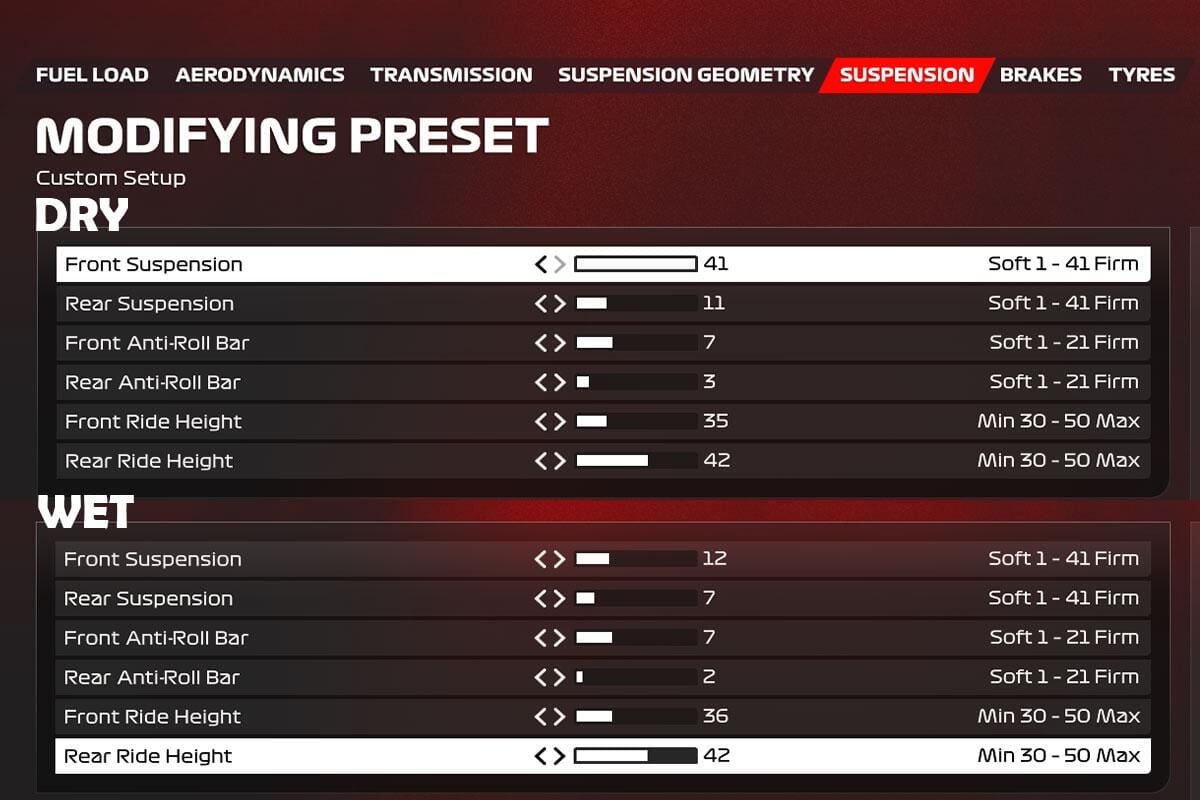
Dry:
- Front Suspension: 41
- Rear Suspension: 11
- Front Anti-Roll Bar: 7
- Rear Anti-Roll Bar: 3
- Front Ride Height: 35
- Rear Ride Height: 42
Wet:
- Front Suspension: 12
- Rear Suspension: 7
- Front Anti-Roll Bar: 7
- Rear Anti-Roll Bar: 2
- Front Ride Height: 36
- Rear Ride Height: 42
A stiffer front suspension compared to the rear seems to work great in F1 23 Monaco setup and even in setups for other tracks in general. The same goes with a lower front ride height compared to the rear. This ensures your car has optimal weight distribution and can turn at a dime while being planted to track.
However, the suspension part of any F1 car is the most experimental and also personal. So, feel free to play with these settings to figure out what works best for you in your setup and style. You can try changing the values for the Front Anti-Roll Bar and Rear Anti-Roll Bar to give a different feel when turning- find out what works best for you to take as precise turns as possible.
Brakes
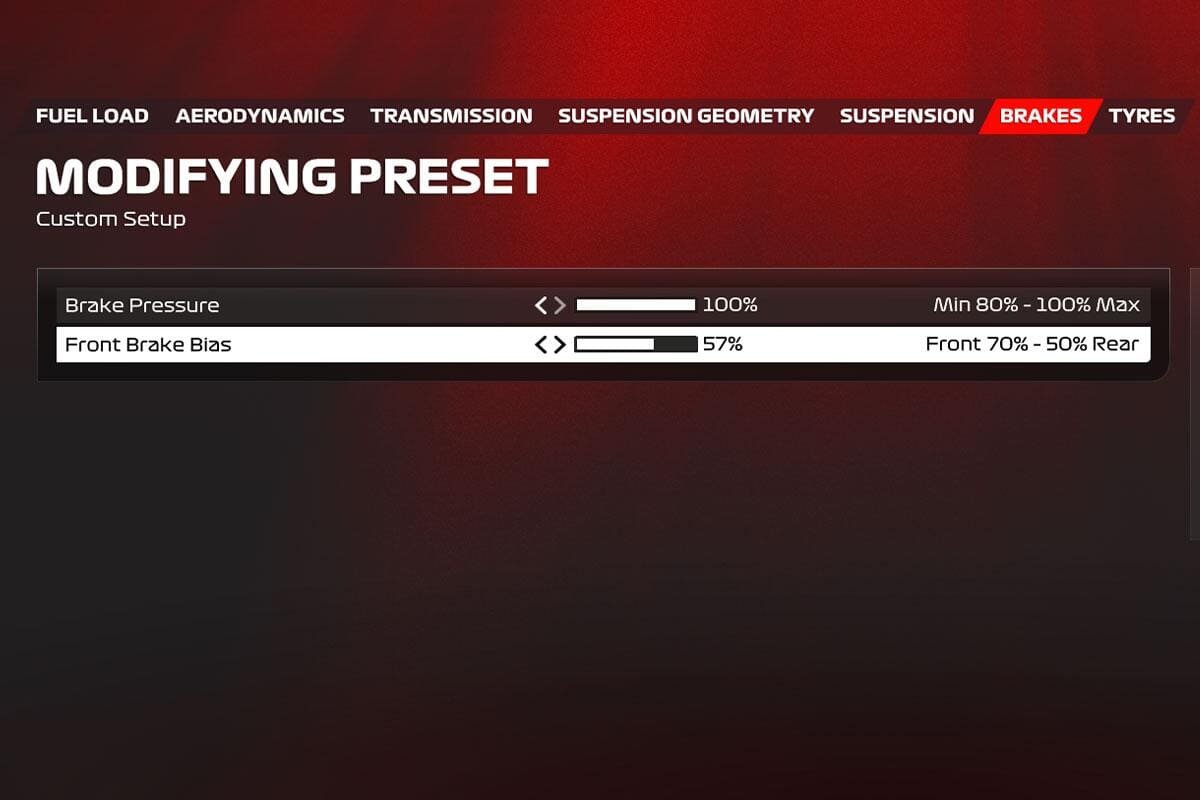
- Brake Pressure: 100
- Front Brake Bias: 57 / 54 (wet)
These settings work best for an extreme street track like Monaco. This ensures you can brake right before the twisting turns and be able to retain as much speed as possible through the corners. Precision is key in Monaco, which requires precise Braking Pressure and Front Brake Bias. Making slight changes to these amounts will result in bigger differences than you would expect, so keep that in mind while experimenting.
For F1 23 Monaco setup in wet conditions, you can decrease the Front Brake Bias to 54 or slightly lower depending on your driving style. If you want really smooth but longer brake times, you can even try reducing the Brake Pressure settings down to 95%. Good brake pressure values essentially make sure you can brake as late as possible while still maintaining control.
Tyres
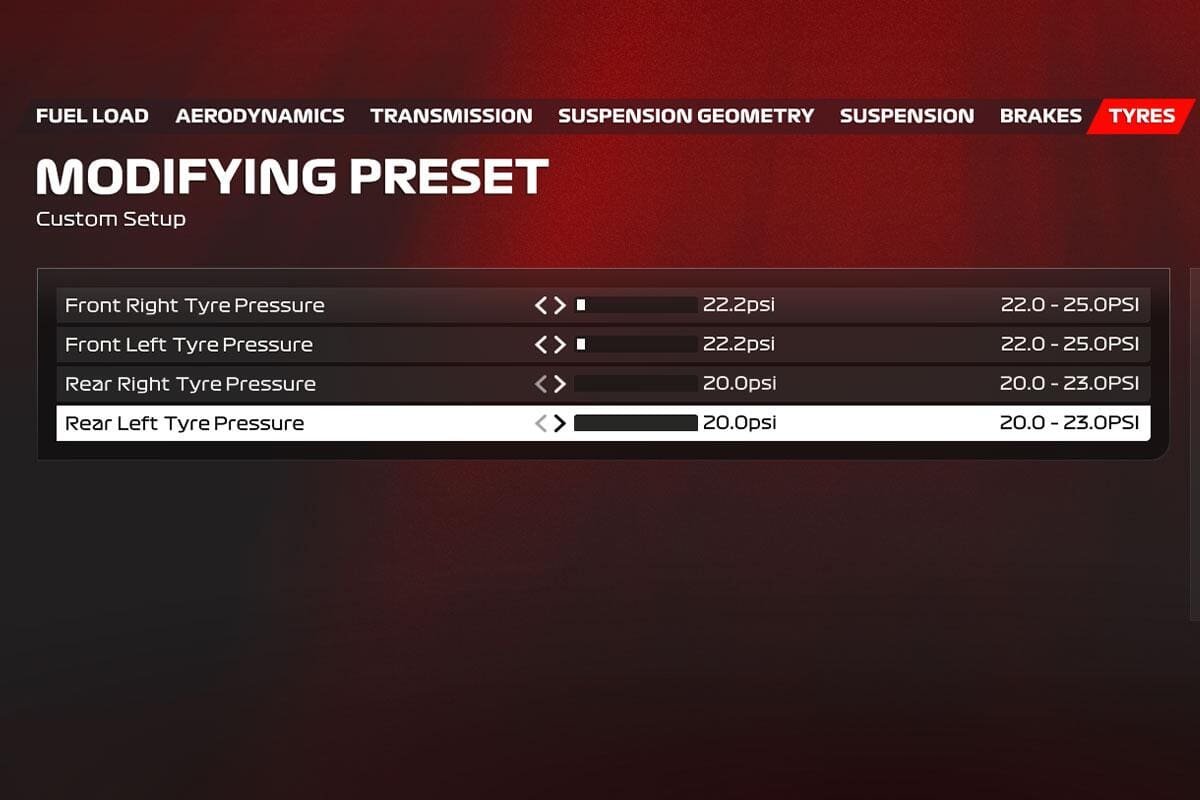
- Front Right Tyre Pressure: 22.2
- Front Left Tyre Pressure: 22.2
- Rear Right Tyre Pressure: 20.0
- Rear Left Tyre Pressure: 20.0
While this can be a good base for an optimal amount of tyre pressure, experiment with this one based on your preferences. In this year’s F1 title, lower tyre pressure seems to work generally well. These settings have been shown to perform well and result in an efficient amount of tyre wear in both dry and wet conditions.
Make sure you experiment and modify this setting based on how long your races are. Maintaining tyre wear and keeping an eye on it throughout the whole race is crucial for a tough track like Monaco.
Monaco is arguably the toughest track out there to master in F1, so you will need some patience for this one. These settings will give you the best F1 23 Monaco setup that you can build off of, based on your own style.
Make sure to head over to our other setup guides:





